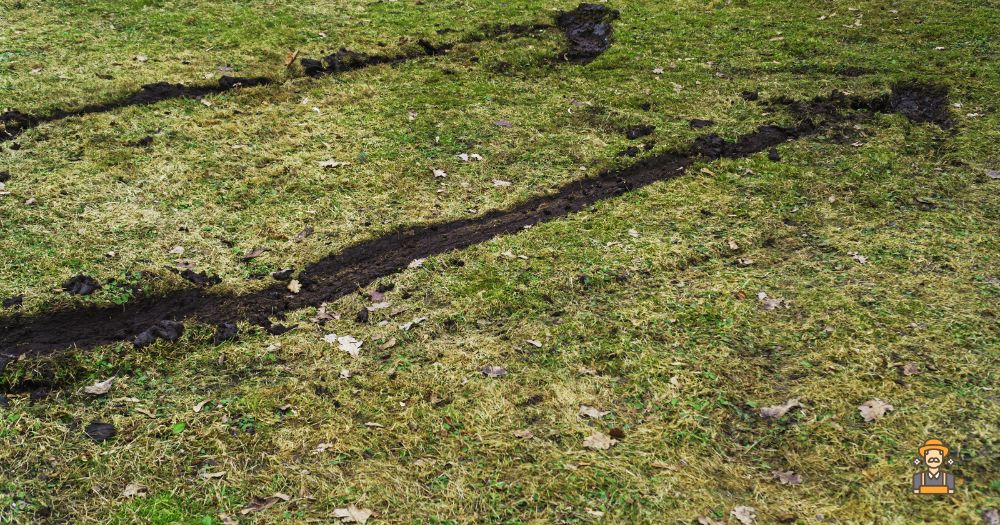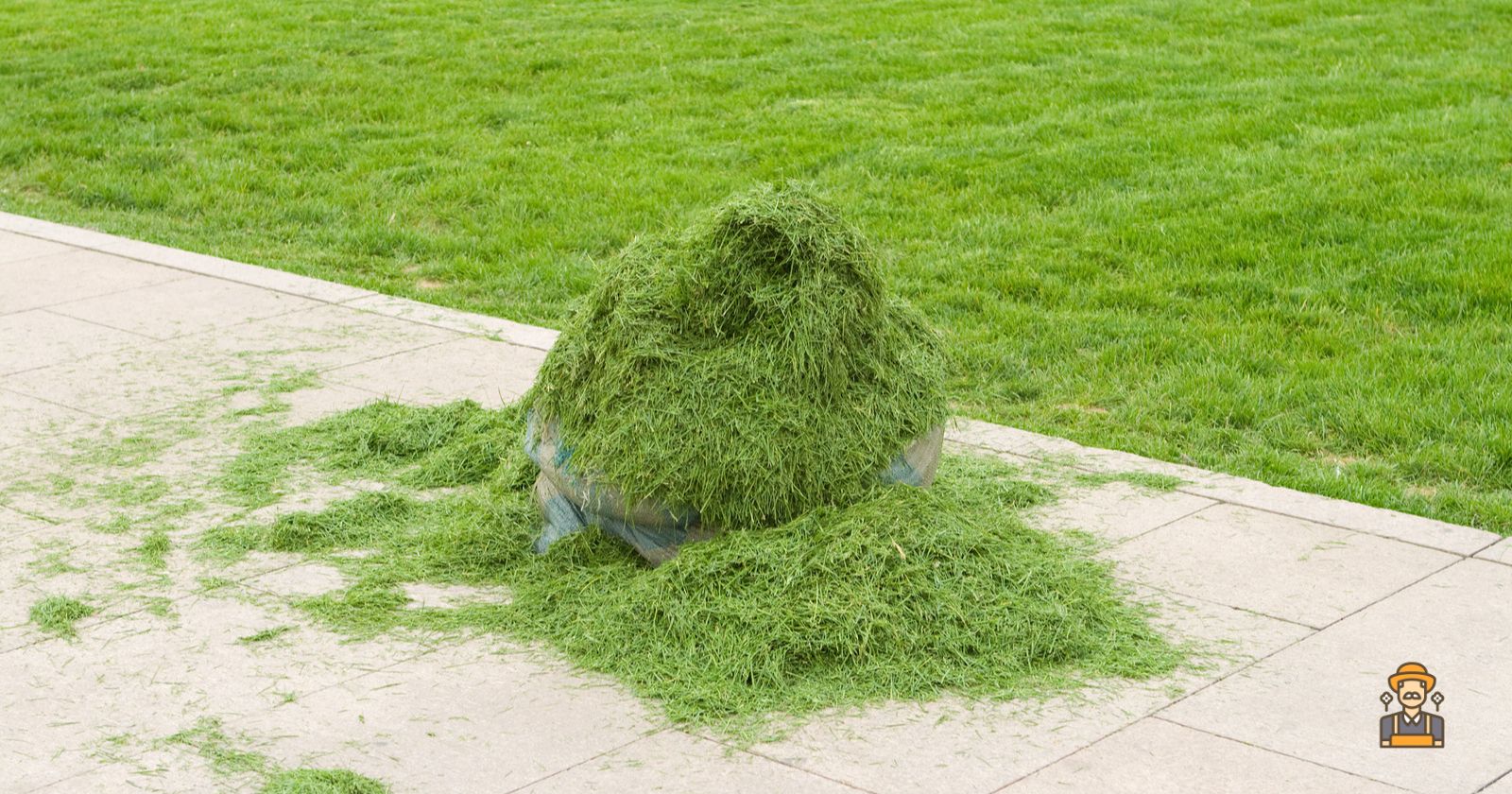Ah, the smell of freshly cut grass on a sunny day – it’s the unmistakable sign of a well-kept lawn. But wait! Before you let those tiny grass clippings disappear into the green abyss, let’s talk about the lesser-known side of this popular lawn care practice.
In this article, we’ll dive into the disadvantages of mulching grass with a concise analysis, exploring why you might want to think twice before mulching your way to a picture-perfect yard. Whether you’re a seasoned gardener or a lawn care newbie, understanding these drawbacks can help you make more informed decisions for your lawn’s health and appearance. So, let’s get to the root of the matter and uncover the truth about mulching grass!
When you consider lawn care strategies, mulching grass is often recommended as a way to recycle nutrients back into the soil, improve soil structure, and reduce the need for fertilizers. However, it’s essential to understand that mulching grass comes with its own set of disadvantages that you should be aware of before making a decision.
You might face challenges such as damp soil, messy results, and increased lawn mower maintenance. Knowing these issues in advance can help you decide if mulching grass is the right method for your specific lawn care needs, taking into account factors like the type of grass, local weather conditions, and any surrounding plants or landscaping features.
1. Disadvantages for Lawn Health
Thatch Buildup
When mulching grass, you often leave grass clippings on the lawn. While this can help return nutrients to the soil, it can also lead to thatch buildup. Thatch is a layer of dead grass, roots, and stems that accumulates between the soil and the grass blades. Excessive thatch buildup can make it difficult for water, air, and nutrients to penetrate the soil, compromising your lawn’s health (The Inspired Gardener).

Pest Infestations
Mulching grass can also attract various pests, such as rats and snakes. The grass clippings provide an ideal hiding place for these pests, which can burrow and dig under your lawn, causing damage to the grass and any nearby plants (MowersLab). It is important to maintain a proper balance of mulching to avoid creating a welcoming habitat for unwanted pests.
Reduced Air Circulation
Using an excessive amount of mulch on your lawn can inadvertently smother the grass, blocking necessary air circulation. Oxygen is essential for the growth and health of grass and roots. A lack of air circulation can lead to a weak and unhealthy lawn (Lawn Affection). To avoid this issue, make sure to spread the mulch evenly and not too thickly.
Disease Promotion
Mulching grass might promote certain diseases on your lawn. Decaying grass clippings can create a moist environment that is conducive to the growth of harmful fungi or mold. These diseases can spread quickly throughout the lawn, causing extensive damage if not treated properly (The Inspired Gardener). To minimize the risk of disease, ensure that your mulching practices do not create overly moist conditions, and monitor your lawn closely for signs of illness.
2. Environmental Concerns
Mulching grass has its downsides, especially when it comes to the environment. In this section, we’ll discuss two pressing environmental concerns: excess nitrogen runoff and increased water use.
Excess Nitrogen Runoff
When you mulch your grass clippings, they naturally decompose and release nutrients back into the soil. One of these nutrients is nitrogen, which is essential for plant growth. However, excessive amounts of nitrogen can lead to nutrient imbalances in the soil.
Heavy rain or overwatering can cause nitrogen to leach from the soil and enter nearby bodies of water. High levels of nitrogen in waterways can lead to the growth of harmful algae blooms, which can be toxic to aquatic life and decrease water quality. To mitigate this environmental concern, it’s essential to practice proper mulching techniques and avoid over-fertilizing your lawn.
Increased Water Use
Mulching your grass has the potential to increase water usage in your garden, especially if done incorrectly or excessively. According to Evergreenseeds, mulching can cause the soil to retain moisture for longer periods, tempting you to water your lawn more frequently than necessary.
To prevent overwatering, it’s crucial to take note of the moisture levels in the soil and adjust your watering habits accordingly. Additionally, using a time-based irrigation system can help regulate the amount of water applied to your lawn, avoiding unnecessary water waste and reducing the environmental impact of your mulching practices.
3. Aesthetic Issues
Mulching grass can sometimes cause aesthetic issues for your lawn. Two of the most common problems associated with mulched grass are uneven appearance and discoloration. In this section, we will discuss these issues in detail and help you understand how they can affect the overall look of your lawn.

Uneven Appearance
When you mulch grass, it’s essential to ensure that the clippings are evenly distributed across your lawn. If not, you may notice an uneven appearance. This can occur due to:
- Clumps of clippings left on the lawn, especially when the grass is wet or damp, making it difficult for them to break down properly (source).
- Grass blades being cut at different heights, causing some areas to look taller or shorter than others.
- Inconsistent mowing patterns, which can create noticeable ridges and valleys in the grass.
- Mowers with insufficient power, which may struggle to mulch and evenly distribute clippings (source).
To avoid an uneven appearance, it’s essential to mow your lawn regularly and ensure your mower has enough power to mulch grass effectively.
Discoloration
Mulching grass can also lead to discoloration, giving your lawn an uneven, patchy appearance. Some factors contributing to this issue include:
- Excessive clippings: If too many clippings are left on the lawn, they can smother the grass, blocking sunlight and reducing photosynthesis, which can lead to yellowing or browning of the grass.
- Hydrogen sulfide production: Clippings can sometimes mat together and form hydrogen sulfide gas, which can cause the grass to turn yellow or brown (source).
- Mulching shallow-rooted grass species: Some grass species have shallow root systems, making them more susceptible to stress from mulching, which can lead to discoloration.
To prevent discoloration, monitor the amount and distribution of clippings on your lawn and adjust your mowing frequency accordingly.
4. Maintenance Challenges
Increased Mowing Frequency
One of the disadvantages of mulching grass is that it may require you to mow your lawn more frequently. As the purpose of mulching is to distribute fine grass clippings evenly across your lawn, it’s important to avoid letting the grass grow too tall, as this can lead to uneven mulching and problematic grass clumps (The Inspired Gardener).
Mulching when the grass is damp can also be problematic, as it doesn’t break down as easily, staying damp longer and potentially encouraging the growth of mold and fungus (Evergreen Seeds). To avoid these issues, you may need to mow your lawn more often to maintain optimal mulching conditions.
Additional Equipment Requirements
Another maintenance challenge associated with mulching grass is the need for additional lawn care equipment. To effectively mulch, you’ll need a powerful lawn mower with a mulching feature, as electric mowers aren’t usually strong enough for this task (Pepper’s Home and Garden). Additionally, your lawn mower may require more frequent maintenance and blade replacements (Eco Family Life).
Investing in a mulching mower might be necessary if you choose this method, as it’s specifically designed to cut and distribute grass clippings more efficiently than regular mowers. It’s essential to monitor your mower’s performance and maintain it regularly to ensure it continues to provide effective mulching results.
Common Questions About Mulching
Is it better to bag or mulch grass?
When it comes to choosing between bagging and mulching grass, there’s no one-size-fits-all answer. It ultimately depends on your lawn’s specific needs and your personal preferences. Mulching can return nutrients to the soil, but as we’ve discussed, it has its disadvantages too. Bagging, on the other hand, ensures a tidier look but requires more effort and disposal.
What is the best mulch to keep weeds from growing?
You’ll want to opt for a fine-textured, organic mulch like compost, pine straw, or shredded leaves, which creates a dense barrier against weed growth.
Are wood chips good as mulch?
Absolutely! Wood chips can help retain moisture, regulate soil temperature, and add a polished look to your garden beds. Just make sure they’re properly aged and avoid piling them too high around plant stems to prevent any issues.
And there you have it, folks! We’ve dug deep into the world of lawn care to uncover the not-so-green truth about the disadvantages of mulching grass. While it may seem like an effortless way to keep your yard looking pristine, it’s essential to weigh the pros and cons before adopting this practice wholeheartedly. Remember, every lawn is different, and what works for one might not be the best choice for another. So, as you venture into the great outdoors, armed with your trusty lawnmower, consider the information we’ve shared and make the best decision for your little patch of paradise. Happy gardening, and may your grass be ever green!
